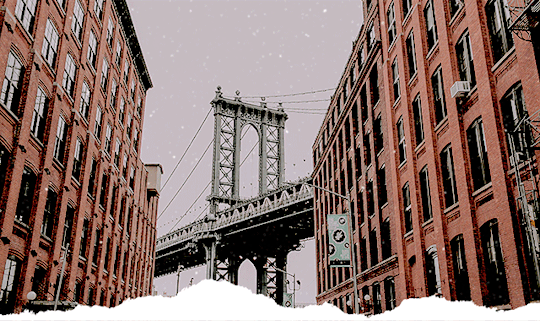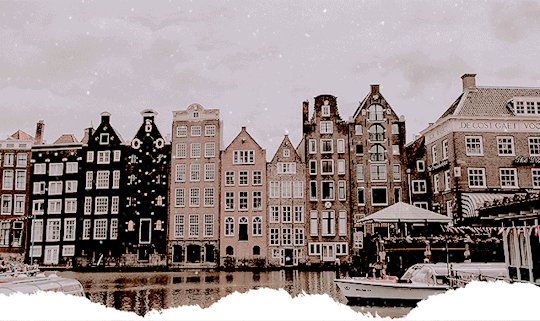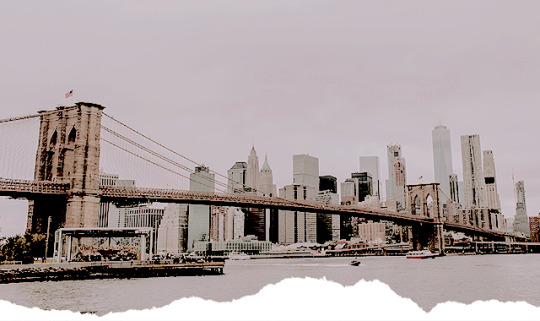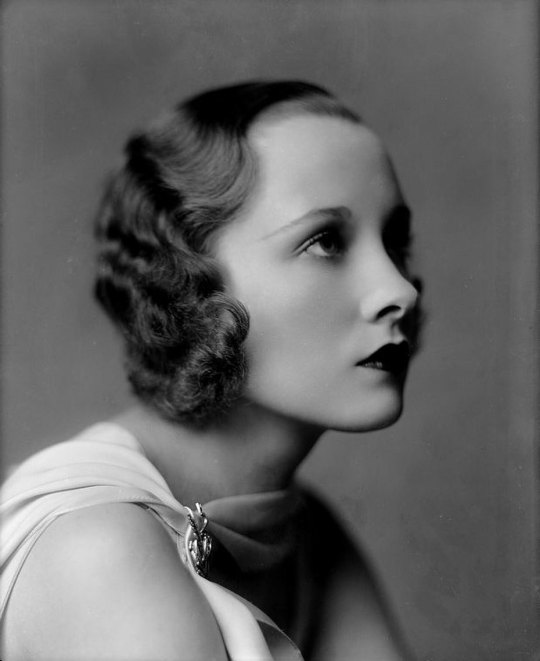#new york amsterdam news
Text

W. E. B. Du Bois, As The Crow Flies, (draft), [Printed in «New York Amsterdam News»], May 10, 1941 [W. E. B. Du Bois Papers (MS 312), Special Collections and University Archives, University of Massachusetts Amherst Libraries, Amherst, MA. © David Graham Du Bois Trust]

#history#historiography#sociology#draft#newspaper#w. e. b. du bois#new york amsterdam news#amsterdam news#w. e. b. du bois papers#university of massachusetts amherst libraries#1940s
8 notes
·
View notes
Text
“It’s so crazy JKR is misgendering a real cis WOMAN who was raised as a GIRL her whole LIFE what a dummy” is such a dogshit argument lol stop ceding ground to the idea that cis women have a more legitimate claim to womanhood because they were “born and raised” a woman and that’s why it makes this misgendering “more” ridiculous somehow. transphobes being constantly wrong about who is “actually transgender” is not their trans clocking radar ‘misfiring,’ they are proudly, openly, and successfully terrorising the public into accepting a very narrow & particular white suprematist notion of gendered divisions in society. JKR is not ‘mistaken’ she’s a fucking white supremacist who hangs out with other white supremacists & advances white supremacy through the language of transphobia. why is anyone still acting like she’s “making mistakes” where have you people been
19K notes
·
View notes
Text

The best kept Art Nouveau theater in the United States is this one: The New Amsterdam Theatre in NYC built 1902-1903. It was designed by the architecture firm Hertz and Tallant. It is the oldest operating.
#dark academia#light academia#classical#academia aesthetic#escapism#academia#books and libraries#classic literature#books#architecture#history#historical#building#art nouveau#united states#new york#The New Amsterdam Theatre#nyc#early 1900s#early 20th century#royalcore#cottagecore#aesthetics#mood#vibe#style#design
785 notes
·
View notes
Text

Union Street, Amsterdam, New York.
84 notes
·
View notes
Text

New Ansterdam Theatre in New York City
#new amsterdam#new amsterdam theatre#theatre#new york city#ciudad de nueva york#new york#nueva york#united states#estados unidos#america
558 notes
·
View notes
Text
i don't think I've ever seen anyone talking about this but all i can think about since finishing the goldfinch is how theodore decker never truly left new york.
okay so we have 13 year old theo, whose mother just died in the museum, living at the barbour's, and meeting hobie and seeing pippa again. this much is obvious, he's still living in new york, wandering the streets and places where he and his mother frequented, being a shadow of his previous life. at night he dreams of the museum, and wakes up screaming.
his father appears, takes him to vegas. and despite meeting boris and doing all sorts of things with him (drinking, drugs, you name it), he's still 14 year old theo believing his mother is waiting for him back home. he wakes up from the museum more often than not, but i believe this is also when his dreams take a different turn; back in new york, places he would go with his mother, knowing she was there but never seeing her, never being in the same place as her. he longs for her, longs for his old life, believes her death was his fault. he tries to distract himself. like boris says: 'i drink to be happy, but you wanted to die'. boris, who has lived in so many countries, always moving, and theo, with his longing to return to the place he knows.
and then his dad dies and he goes back to new york. 15 year old theo is back in his home city, around the places he knows. places he was with his mother. and of course he goes to hobie's. what else can he do? he goes to college, learns the furniture dealer's way, and for the next eight years he lives in new york, working, wandering the streets. his longing for his childhood with his mother has subdued, mostly, thanks to the controlled (as he believes) substance abuse. he gets engaged to none other than kitsey barbour, and he continues to live his life. he takes her to places he went with his mother, places she never appreciated ('the dingbat'). he continues to love pippa (though, as we all know, that love wasn't healthy - it wasn't really love. he appreciates pippa, her friendship, but he latched on to her because they both share the same trauma and he believes no one will understand him better than she, now that his mother is gone. as the narrator in fight club says: 'you met me at a very strange time in my life.')
the boris appears. he's there and it turns out that he stole the painting. because the painting had followed theo since he was 13, going wherever he went. and now? its halfway across the world. and so now theo follows the painting, all the way to amsterdam.
new york used to be called new amsterdam until the english took over the dutch that lived there and renamed it new york. coincidence that theo ended up in the former namesake of the city he can never escape? the country where fabritius, the painter, was from. it would make sense for the painting to maybe be in delft, the place where it was discovered, where fabritius died, to make it a full circle, but no. amsterdam.
there, theo saw his mother again. he actually saw her. halfway across the world and yet he's somehow still in new york. with her.
the end of the novel is very open. theo travels, of course, to rectify the false furniture he sold, but everything ties him back to new york. his engagement to kitsey isn't over, the barbours expect him to return, someday. he still works with hobie.
'but vivian,' you might think, 'what about pippa? she went through the same thing theo did and yet she spends most of her time out of new york.'
the truth is that we don't know much about pippa. she wasn't present during most of the novel, mostly in theo's mind. we know some things about her: her parentage, music she likes and so on, but we barely know how the explosion affected her.
as she remarks in her letter at the end, she and theo would be bad for each other due to their extreme similarities. she has difficulties because of the explosion. she goes to texas, then switzerland, then london, then california. she can't seem to stay in new york, but she's there a lot of course, hobie's there, and so is theo.
i believe that in this, pippa and theo are opposites: theo, no matter what he does, is always in new york, always returning. somehow he wants to be there, for the memories of his mother. he wants to walk those streets and go to those places they went to together. its painful for him but he'd rather that than be somewhere new. pippa, on the other hand, leaves voluntarily. a lot. of course she wishes to be close to hobie, but she just can't stand to be in new york for the same reason theo stays. pippa walks the streets of new york and thinks 'welty used to take me here, and here' and its unbearable for her.
even so, most nights they both return to the same point, and they both know they'll never leave it, or rather, it'll never leave them.
#the goldfinch#donna tartt#sorry if this isn't really articulate#i just started thinking about how new york used to be new amsterdam and something just clicked in my mind#enjoy#the goldfinch by donna tartt
24 notes
·
View notes
Text



CITY HEADERS (RANDOM)
12 headers // 640x380
borders by @peytonsawyers
pics found on pexels
please do not edit or claim as your own
credit is appreciated, but not required
hope you like them (⊃。•́‿•̀。)⊃












#headers#city headers#aesthetic headers#aes#aesthetic#edit*#headers*#paris#new york#nyc#amsterdam#places#jddryder#usermiia#userireland#alielook#lookpetal#allresources#dailyresources#resources#tuserandrea
142 notes
·
View notes
Text
Sleepy Hollow, New York, USA. Home of the Headless Horseman...







#nature#hiking#travel#cottagecore#cottage aesthetic#usa#america#new york#hudson river#sleepy hollow#headless horseman#ichabod crane#autumn#fall aesthetic#washington irving#dutch#tarrytown#myths#storytelling#ghost stories#american horror story#horror#ghosts#spirits#american revolution#18th century#19th century#new amsterdam#halloween#halloween vibes
10 notes
·
View notes
Text
22 Sivan 5784 (27-28 June 2024)
Today, New York City has the largest Jewish population of any urban area in the world, with three times as many Jewish residents as Jerusalem and four times as many as Tel Aviv. It’s without a doubt one of the great Jewish cultural centers of the modern world, and is famous worldwide for its varied and diverse population. Today, on the 22nd of Sivan, we celebrate the first Jewish immigrants who helped create that multiculturalism.
Four hundred years ago, Amsterdam was an early European testing ground of religious freedom, having thrown off Spanish rule and celebrated in part by accepting Sephardi refugees. The Dutch were also a mercantile powerhouse determined not to let the British outdo them at overseas colonization.
The Dutch West India Company was established by Dutch merchants to organize colonial ventures in the western hemisphere. The company appointed Peter Stuyvesant as Director General of its overseas operations and Stuyvesant set out for the Dutch Colony of New Amsterdam. Ironically, much like the English Puritan settlers who left Amsterdam for Massachusetts because they were distressed by the wide cultural toleration of Dutch society, Stuyvesant yearned for life in the new world in part because he wanted to build a new society in which religious and cultural toleration had no place, ruled strictly by and for members of the Dutch Reformed Church. Stuyvesant had no interest in creating an inclusive religious environment for fellow mainstream Protestants such as Lutherans or new sects like the Quakers, much less Catholics or Jews.
But Stuyvesant’s ambitions of intolerance almost immediately ran up against the ideals and mercantile values of the company that paid his salary. The Dutch West India Company had Jewish merchants among its stockholders and didn’t want to risk offending any potential settlers willing to bring their capital to the new colony. In 5414, the first Jewish settlers arrived. They included a small contingent of Ashkenazim who had come directly from Amsterdam, and a boatload of Portuguese Sephardim who had begun practicing Judaism again in Dutch occupied Recife, and then fled to avoid the Inquisition when the territory was again seized by Portugal. Stuyvesant was horrified, and immediately wrote to the West India Company board seeking permission to expel the Jewish arrivals before a Jewish community took root. The board refused Stuyvesant’s request.
The next ten years, right up until the English conquest of the colony, consisted of Stuyvesant’s repeated attempts to impose restrictions of one kind or another on the Jewish colonists, Jewish protests against these restrictions through the courts or through appeals to Dutch Jews with influence on the company, and a string of letters from the West India Company reiterating the policy of toleration and insisting that Stuyvesant give the Jewish community of New Amsterdam all the rights that Amsterdam’s Jewish community enjoyed.
The 22nd of Sivan 5416 is the date of the board’s third letter to Stuyvesant overturning his attempts to restrict the rights of the Jewish settlers. In classic Dutch fashion for the period, it emphasized the rights of minorities to “quietly and peacefully” engage in business, and to privately practice their religion so long as doing so did not intrude on the public sphere. This final limitation meant that although New Amsterdam’s Jewish community regularly met for prayer and Torah services in each other’s private homes and had two licensed kosher butchers, the first official synagogue wouldn’t be built until seventy-six years after the first Jewish colonists arrived.
So today we celebrate the first Jews of New Amsterdam, who continued to fight for their rights through numerous bigoted attempts to restrict them, and for the victories they won. Their efforts laid the groundwork for a vibrant and thriving city that Jews—and many other minorities— now consider a beloved home.
Today is also Erev Shabbat. Prepare to welcome the sabbath queen when the day is almost over and the sun starts dipping under the horizon.
#jewish calendar#hebrew calendar#judaism#jewish#jumblr#jewish history#sephardi diaspora#ashkenazi diaspora#new york city#biggest jewish city in the world#diaspora judaism#diaspora history#nyc jews#old new york was once new amsterdam#cw antisemitism#Sivan#22 Sivan#🌖
12 notes
·
View notes
Text


Stunning Portraits Of Austrian Actress
Tilly Losch In The Band Wagon (Theatre 1931)
#tilly losch#the band wagon#1931#stunning portraits#beautiful austrian actress#new amsterdam theatre#new york city#1930's#cropped photos#b/w photography
56 notes
·
View notes
Text
youtube
Bon Matin 🆕️ 🗽🎺💙
Metronomy ,Pan Amsterdam 🎶 Nice Town
#new music#metronomy#pan amsterdam#vidéo clip#nice town#music video#new york#clip music video#youtube#bon matin#fidjie fidjie
14 notes
·
View notes
Text

#movies#iptv usa#iptv channels#iptv canada#iptv france#iptv belgium#iptv spain#iptv danmark#iptv united states#iptv amsterdam#iptv new york#iptv texas#iptv uk#iptv united kingdom#iptv server#iptv m3u#iptv subscription#iptv firestick#iptv list#iptv#sports iptv#buy iptv channels#buy iptv#buy iptv list#buy iptv subscription#buy iptv playlist
27 notes
·
View notes
Text
can we like go back to basics for a second lol. every mainstream news outlet, public figure, elected official, social media influencer, religious leader, and civil society organisation pushing transphobic policy and rhetoric always focus on trans women. literally every single one of them. even when trans men are brought up it is primarily in relation to trans women “tricking girls” into transitioning.
& I am speaking specifically as a trans guy who has been harassed on the street + outted and intimidated by Nazis on campus + lost entire friend groups + kicked out by my parents because I’m trans. like this is literally not a competition about who is “oppressed more” it is a basic fact. I am reminded always that whenever transphobia is voiced in public (which is often and only becoming more frequent) I am either not the target of hatred or I am being used as a rhetorical tool to further advance transmisogyny. fundamentally if you don’t acknowledge this extremely basic point about institutional transphobia then you are actively attempting to obfuscate reality
10K notes
·
View notes
Text








AUTUMN
There is no more perfect season.
New York City, USA | Amsterdam, Netherlands | Gablenz, Germany | Amsterdam, Netherlands | Paris, France | Central Park, NYC, USA | Milan, Italy | Vermont, USA
s
22 notes
·
View notes
Text





















New Amsterdam was renamed New York on September 8, 1664, in honor of the Duke of York (later James II of England), in whose name the English had captured it.
#New Amsterdam#renamed#Manhattan#New York City#travel#original photography#vacation#tourist attraction#landmark#architecture#cityscape#USA#summer 2019#2018#8 September 1664#380th anniversary#US history#Brooklyn Bridge#Chrysler Building#Empire State Building#One World Trade Center#American Radiator Building#St. Patrick’s Cathedral#Bryant Park#Trinity Church#Manhattan Bridge#Grand Central Terminal#Hearst Tower#Met Tower#Flatiron Building
3 notes
·
View notes
